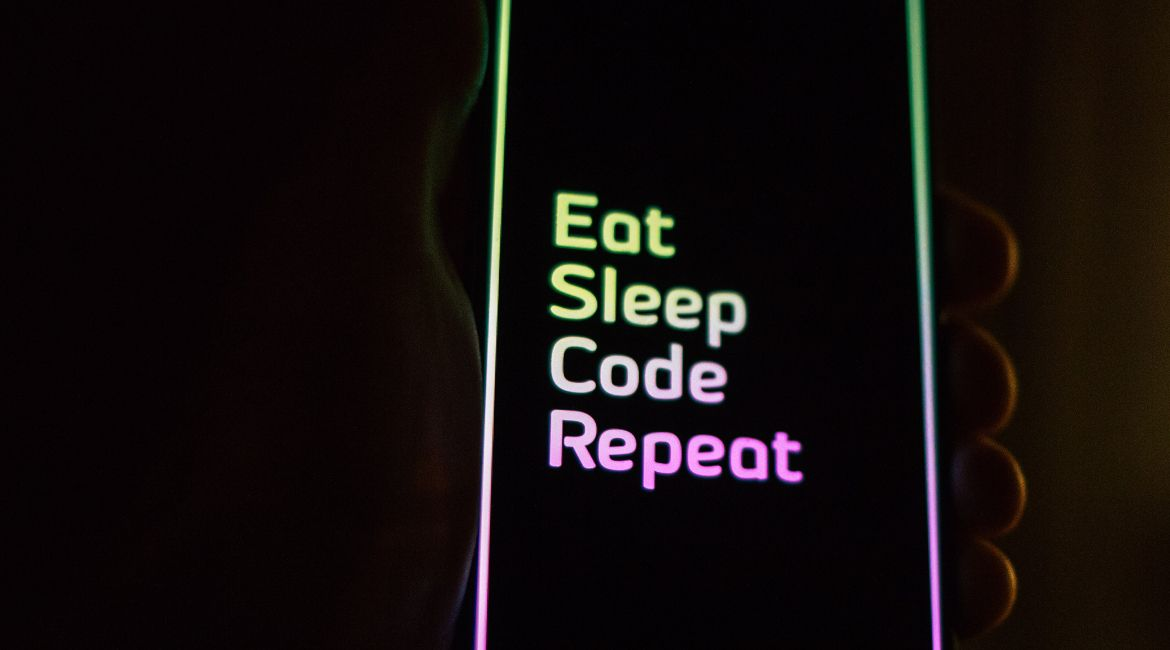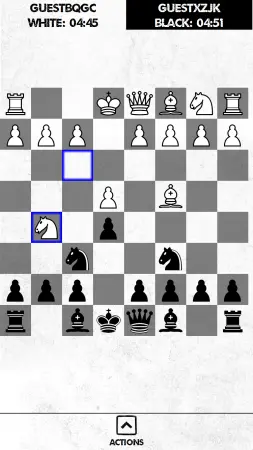blog
September 23, 2020
•3 min read
TCP networking in Cordova
Network communication is trivial in Cordova based projects. You have two main options to communicate with a server: HTTP or WebSockets.You start having problems when you want to use something more low level. For example, if you want to implement a client to communicate with legacy services (like Telnet, IRC, etc), you need to use native TCP sockets.
Current W3C web APIs don’t expose any standardized interface and proposals like TCPSocket (https://developer.mozilla.org/en-US/docs/Web/API/TCPSocket) are still far from being implemented in web browsers.
We wanted to implement a phone and tablet application for online chess playing, that runs on three major operating systems: iOS, Android, and Windows Phone. We didn’t want to reinvent the wheel, by implementing our own chess server, so we decided to build the application on the time-honored Free Internet Chess Server (http://www.freechess.org/).
The problem is that FICS uses old fashioned TCP text based protocol, so the use of standard Web API was not an option. We could use websocket-to-socket bridge with intermediate service, but it requires hosting of service on some infrastructure, and it slightly worse reliability. Finally, we decided to implement our own Cordova plugin for TCP communication. I’ll describe it here in this blog post.
Usage
You can install plugin to your Cordova project with command line:
cordova plugin add cz.blocshop.socketsforcordova
Usage is simple, you just have to create instance of socket object:
var socket = new Socket();
Then you need to setup data consumer, error and close handlers:
socket.onData = function(data) { // invoked after new batch of data is received (typed array of bytes Uint8Array) }; socket.onError = function(errorMessage) { // invoked after error occurs during connection }; socket.onClose = function(hasError) { // invoked after connection close };
Finally you can connect to server:
socket.open( "someremoteserver.com", 1234, function() { // invoked after successful opening of socket }, function(errorMessage) { // invoked after unsuccessful opening of socket });
At this point, socket instance is in connected state and you started to receive events to handlers you setup above.Write method of the socket accepts only Uint8Array, so you have to convert your string data. This code shows how to do it:
var dataString = "Hello world"; var data = new Uint8Array(dataString.length); for (var i = 0; i
There are 2 options of how to close the connection.
1) You can close the connection gracefully by sending FIN packet using shutdownWrite method:
socket.shutdownWrite();
After you call this method, you should wait until server sends all data to you and closes the connection. After that, you receive socket.onClose event.
2) Second options is to close socket immediately:
socket.close();
You receive socket.onClose event shortly after you call this method. Writing data to closed socket is not allowed.
More information
We created a sample Cordova project on GitHub:https://github.com/blocshop/sockets-for-cordova-testerThe Cordova plugin itself is also available on GitHub:https://github.com/blocshop/sockets-for-cordova
To see how this plugin works in a real-world application, you can download our Blindfold Chess Trainer game in your mobile app store (Android, iOS) and play online. Enjoy!
Learn more from our insights

NOVEMBER 3, 2025 • 7 min read
CE marking software under the EU AI Act – who needs it and how to prepare a conformity assessment
From 2026, AI systems classified as high-risk under the EU Artificial Intelligence Act (Regulation (EU) 2024/1689) will have to undergo a conformity assessment and obtain a CE marking before being placed on the EU market or put into service.

October 19, 2025 • 7 min read
EU and UK AI regulation compared: implications for software, data, and AI projects
Both the European Union and the United Kingdom are shaping distinct—but increasingly convergent—approaches to AI regulation.
For companies developing or deploying AI solutions across both regions, understanding these differences is not an academic exercise. It directly affects how software and data projects are planned, documented, and maintained.

October 9, 2025 • 5 min read
When AI and GDPR meet: navigating the tension between AI and data protection
When AI-powered systems process or generate personal data, they enter a regulatory minefield — especially under the EU’s General Data Protection Regulation (GDPR) and the emerging EU AI Act regime

September 17, 2025 • 4 min read
6 AI integration use cases enterprises can adopt for automation and decision support
The question for most companies is no longer if they should use AI, but where it will bring a measurable impact.
The journey to your
custom software
solution starts here.
Services
Let's talk!
blog
September 23, 2020
•3 min read
TCP networking in Cordova
Network communication is trivial in Cordova based projects. You have two main options to communicate with a server: HTTP or WebSockets.You start having problems when you want to use something more low level. For example, if you want to implement a client to communicate with legacy services (like Telnet, IRC, etc), you need to use native TCP sockets.
Current W3C web APIs don’t expose any standardized interface and proposals like TCPSocket (https://developer.mozilla.org/en-US/docs/Web/API/TCPSocket) are still far from being implemented in web browsers.
We wanted to implement a phone and tablet application for online chess playing, that runs on three major operating systems: iOS, Android, and Windows Phone. We didn’t want to reinvent the wheel, by implementing our own chess server, so we decided to build the application on the time-honored Free Internet Chess Server (http://www.freechess.org/).
The problem is that FICS uses old fashioned TCP text based protocol, so the use of standard Web API was not an option. We could use websocket-to-socket bridge with intermediate service, but it requires hosting of service on some infrastructure, and it slightly worse reliability. Finally, we decided to implement our own Cordova plugin for TCP communication. I’ll describe it here in this blog post.
Usage
You can install plugin to your Cordova project with command line:
cordova plugin add cz.blocshop.socketsforcordova
Usage is simple, you just have to create instance of socket object:
var socket = new Socket();
Then you need to setup data consumer, error and close handlers:
socket.onData = function(data) { // invoked after new batch of data is received (typed array of bytes Uint8Array) }; socket.onError = function(errorMessage) { // invoked after error occurs during connection }; socket.onClose = function(hasError) { // invoked after connection close };
Finally you can connect to server:
socket.open( "someremoteserver.com", 1234, function() { // invoked after successful opening of socket }, function(errorMessage) { // invoked after unsuccessful opening of socket });
At this point, socket instance is in connected state and you started to receive events to handlers you setup above.Write method of the socket accepts only Uint8Array, so you have to convert your string data. This code shows how to do it:
var dataString = "Hello world"; var data = new Uint8Array(dataString.length); for (var i = 0; i
There are 2 options of how to close the connection.
1) You can close the connection gracefully by sending FIN packet using shutdownWrite method:
socket.shutdownWrite();
After you call this method, you should wait until server sends all data to you and closes the connection. After that, you receive socket.onClose event.
2) Second options is to close socket immediately:
socket.close();
You receive socket.onClose event shortly after you call this method. Writing data to closed socket is not allowed.
More information
We created a sample Cordova project on GitHub:https://github.com/blocshop/sockets-for-cordova-testerThe Cordova plugin itself is also available on GitHub:https://github.com/blocshop/sockets-for-cordova
To see how this plugin works in a real-world application, you can download our Blindfold Chess Trainer game in your mobile app store (Android, iOS) and play online. Enjoy!
Learn more from our insights

NOVEMBER 3, 2025 • 7 min read
CE marking software under the EU AI Act – who needs it and how to prepare a conformity assessment
From 2026, AI systems classified as high-risk under the EU Artificial Intelligence Act (Regulation (EU) 2024/1689) will have to undergo a conformity assessment and obtain a CE marking before being placed on the EU market or put into service.

October 19, 2025 • 7 min read
EU and UK AI regulation compared: implications for software, data, and AI projects
Both the European Union and the United Kingdom are shaping distinct—but increasingly convergent—approaches to AI regulation.
For companies developing or deploying AI solutions across both regions, understanding these differences is not an academic exercise. It directly affects how software and data projects are planned, documented, and maintained.

October 9, 2025 • 5 min read
When AI and GDPR meet: navigating the tension between AI and data protection
When AI-powered systems process or generate personal data, they enter a regulatory minefield — especially under the EU’s General Data Protection Regulation (GDPR) and the emerging EU AI Act regime

September 17, 2025 • 4 min read
6 AI integration use cases enterprises can adopt for automation and decision support
The question for most companies is no longer if they should use AI, but where it will bring a measurable impact.
The journey to your
custom software
solution starts here.
Services
Head Office
Revoluční 1
110 00, Prague Czech Republic
hello@blocshop.io
Let's talk!
blog
September 23, 2020
•3 min read
TCP networking in Cordova

Network communication is trivial in Cordova based projects. You have two main options to communicate with a server: HTTP or WebSockets.You start having problems when you want to use something more low level. For example, if you want to implement a client to communicate with legacy services (like Telnet, IRC, etc), you need to use native TCP sockets.
Current W3C web APIs don’t expose any standardized interface and proposals like TCPSocket (https://developer.mozilla.org/en-US/docs/Web/API/TCPSocket) are still far from being implemented in web browsers.
We wanted to implement a phone and tablet application for online chess playing, that runs on three major operating systems: iOS, Android, and Windows Phone. We didn’t want to reinvent the wheel, by implementing our own chess server, so we decided to build the application on the time-honored Free Internet Chess Server (http://www.freechess.org/).
The problem is that FICS uses old fashioned TCP text based protocol, so the use of standard Web API was not an option. We could use websocket-to-socket bridge with intermediate service, but it requires hosting of service on some infrastructure, and it slightly worse reliability. Finally, we decided to implement our own Cordova plugin for TCP communication. I’ll describe it here in this blog post.
Usage
You can install plugin to your Cordova project with command line:
cordova plugin add cz.blocshop.socketsforcordova
Usage is simple, you just have to create instance of socket object:
var socket = new Socket();
Then you need to setup data consumer, error and close handlers:
socket.onData = function(data) { // invoked after new batch of data is received (typed array of bytes Uint8Array) }; socket.onError = function(errorMessage) { // invoked after error occurs during connection }; socket.onClose = function(hasError) { // invoked after connection close };
Finally you can connect to server:
socket.open( "someremoteserver.com", 1234, function() { // invoked after successful opening of socket }, function(errorMessage) { // invoked after unsuccessful opening of socket });
At this point, socket instance is in connected state and you started to receive events to handlers you setup above.Write method of the socket accepts only Uint8Array, so you have to convert your string data. This code shows how to do it:
var dataString = "Hello world"; var data = new Uint8Array(dataString.length); for (var i = 0; i
There are 2 options of how to close the connection.
1) You can close the connection gracefully by sending FIN packet using shutdownWrite method:
socket.shutdownWrite();
After you call this method, you should wait until server sends all data to you and closes the connection. After that, you receive socket.onClose event.
2) Second options is to close socket immediately:
socket.close();
You receive socket.onClose event shortly after you call this method. Writing data to closed socket is not allowed.
More information
We created a sample Cordova project on GitHub:https://github.com/blocshop/sockets-for-cordova-testerThe Cordova plugin itself is also available on GitHub:https://github.com/blocshop/sockets-for-cordova
To see how this plugin works in a real-world application, you can download our Blindfold Chess Trainer game in your mobile app store (Android, iOS) and play online. Enjoy!
Learn more from our insights

NOVEMBER 20, 2025 • 7 min read
The ultimate CTO checklist for planning a custom software or AI project in 2026
In 2026, planning a successful project means understanding five essential dimensions before any code is written. These five questions define scope, architecture, delivery speed, and budget more accurately than any traditional project brief.
NOVEMBER 13, 2025 • 7 min read
The quiet cost of AI: shadow compute budgets and the new DevOps blind spot
AI projects rarely fail because the model “isn’t smart enough.” They fail because the money meter spins where few teams are watching: GPU hours, token bills, data egress, and serving inefficiencies that quietly pile up after launch.

NOVEMBER 3, 2025 • 7 min read
CE marking software under the EU AI Act – who needs it and how to prepare a conformity assessment
From 2026, AI systems classified as high-risk under the EU Artificial Intelligence Act (Regulation (EU) 2024/1689) will have to undergo a conformity assessment and obtain a CE marking before being placed on the EU market or put into service.

October 19, 2025 • 7 min read
EU and UK AI regulation compared: implications for software, data, and AI projects
Both the European Union and the United Kingdom are shaping distinct—but increasingly convergent—approaches to AI regulation.
For companies developing or deploying AI solutions across both regions, understanding these differences is not an academic exercise. It directly affects how software and data projects are planned, documented, and maintained.

October 9, 2025 • 5 min read
When AI and GDPR meet: navigating the tension between AI and data protection
When AI-powered systems process or generate personal data, they enter a regulatory minefield — especially under the EU’s General Data Protection Regulation (GDPR) and the emerging EU AI Act regime

September 17, 2025 • 4 min read
6 AI integration use cases enterprises can adopt for automation and decision support
The question for most companies is no longer if they should use AI, but where it will bring a measurable impact.
NOVEMBER 13, 2025 • 7 min read
The quiet cost of AI: shadow compute budgets and the new DevOps blind spot
AI projects rarely fail because the model “isn’t smart enough.” They fail because the money meter spins where few teams are watching: GPU hours, token bills, data egress, and serving inefficiencies that quietly pile up after launch.
NOVEMBER 13, 2025 • 7 min read
The quiet cost of AI: shadow compute budgets and the new DevOps blind spot
AI projects rarely fail because the model “isn’t smart enough.” They fail because the money meter spins where few teams are watching: GPU hours, token bills, data egress, and serving inefficiencies that quietly pile up after launch.

N 19, 2025 • 7 min read
CE Marking Software Under the EU AI Act – Who Needs It and How to Prepare a Conformity Assessment
When AI-powered systems process or generate personal data, they enter a regulatory minefield — especially under the EU’s General Data Protection Regulation (GDPR) and the emerging EU AI Act regime

NOVEMBER 13, 2025 • 7 min read
The quiet cost of AI: shadow compute budgets and the new DevOps blind spot
When AI-powered systems process or generate personal data, they enter a regulatory minefield — especially under the EU’s General Data Protection Regulation (GDPR) and the emerging EU AI Act regime

N 19, 2025 • 7 min read
CE Marking Software Under the EU AI Act – Who Needs It and How to Prepare a Conformity Assessment
When AI-powered systems process or generate personal data, they enter a regulatory minefield — especially under the EU’s General Data Protection Regulation (GDPR) and the emerging EU AI Act regime

NOVEMBER 13, 2025 • 7 min read
The quiet cost of AI: shadow compute budgets and the new DevOps blind spot
When AI-powered systems process or generate personal data, they enter a regulatory minefield — especially under the EU’s General Data Protection Regulation (GDPR) and the emerging EU AI Act regime
The journey to your
custom software solution starts here.
Services






